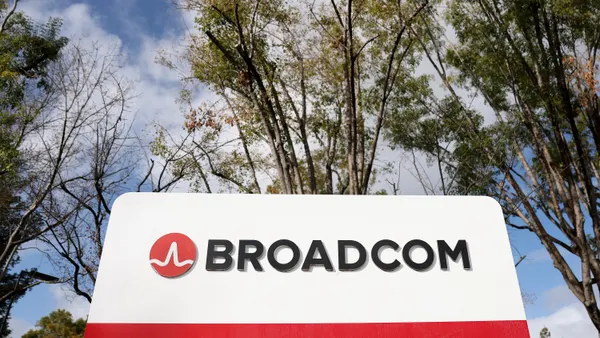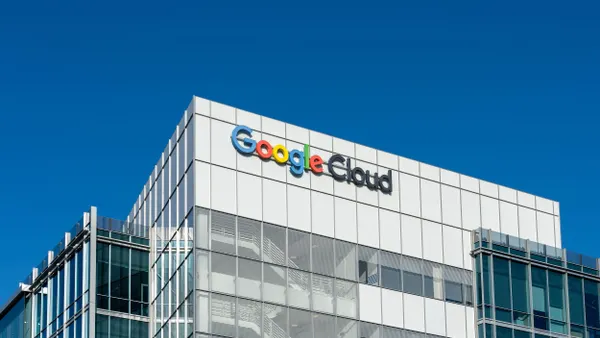Dive Brief:
- Cloud data warehouse usage among the six largest providers spiked in the last five years as organizations prioritized analytics and AI, according to Domo. The company analyzed usage patterns of more than 4,500 customers globally across its data platform.
- Domo saw cloud data warehouse usage more than double from March 2020 to March 2025 based on the percentage of data visualizations and other analytics products customers sourced from AWS, Microsoft Azure, Databricks, Google Big Query, Oracle and Snowflake cloud warehouses. The proportion climbed from below 16% to over 33%.
- “We're at a tipping point where cloud data and data products are becoming essential infrastructure for the AI era,” Domo SVP of Product Ben Schein said in the report. “People have been investing in these technologies for a long time,” he told CIO Dive. “They’re now starting to see value come from those investments.”
Dive Insight:
As enterprises continued to lay the groundwork for generative AI last year, inadequate data infrastructure stood in the way of broad adoption. Siloed data blocked the integrations necessary to scale applications, legacy pipelines slowed modernization efforts and returns on AI investment proved elusive.
Nearly two-thirds of enterprise data management professionals acknowledge their organization wasn’t prepared for generative AI’s data demands, according to a February Gartner report. The analyst firm expects data deficiencies to tank 60% of enterprise AI projects through 2026.
IT vendors have moved quickly to help enterprises bridge data preparedness gaps.
ERP giant SAP deployed a data curation platform in February as part of an alliance with Databricks. SAP Business Data Cloud is a data integration offering that includes analytics tools, dashboards and agentic AI capabilities.
“Business Data Cloud is the new center of gravity for business data,” SAP CEO Christian Klein said last month during the company’s Q1 2025 earnings call. “It unifies and governs all data, SAP and non-SAP, structured and unstructured.”
As generative AI use cases proliferated, Oracle made peace with its three largest hyperscale competitors through partnerships that placed Oracle cloud database servers inside AWS, Azure and Google Cloud data centers.
“If a company is to realize the full potential of AI, they are going to need their infrastructure and data in the cloud,” Amazon CEO Andy Jassy said during the company’s Q1 2025 earnings call last week.
Vendor efforts around data integrations are gaining traction.
Microsoft saw consumption of its cloud-based analytics platform Microsoft Fabric increase 80% during the first three months of the year, CEO Satya Nadella said during an April earnings call. “The amount of data in our multicloud datalake OneLake has grown more than 6x over the past year,” Nadella added.
Domo analyzed a metric it calls “cards views,” defined as “visualizations rendered in desktop, mobile apps, embedded analytics and scheduled emails,” to filter out data sitting idly in the cloud without accruing value.
“The card view is an indication that someone is somehow getting some value out of the data,” Schein said. “If you load the data set and no one's using it, who cares? It’s like a tree falling in a forest with no one there.”














